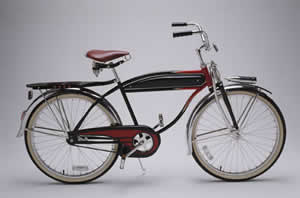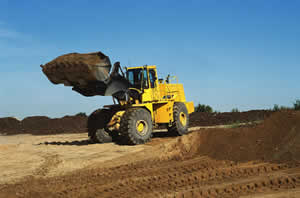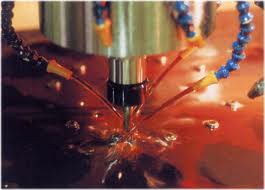Week 1 - Fluids in Technological Devices
4. Properties of Fluids
Properties of Fluids
In Lesson 3, you discovered that fluids are important because they make it easier to transport, process, and use different materials even if these materials are solids. In Lesson 4, you will investigate the properties of fluids that make them useful in technological devices.
Background Information
Fluids are very important in the operation of many machines. Air, for example, is a fluid that is used in the tires of a car or bicycle. The hydraulic system in bulldozers is used to lift heavy loads. The brake system in most vehicles uses fluids to transmit pressure from the driver's foot to the brake pads inside the wheels of a car. In an automobile, engine oil not only to lubricates, but this fluid cools hot engine parts, keeps the engine free of rust and deposits, and seals the rings and valves against leakage of hot gases. In this lesson, you will explore the properties of fluids that are used in machines.
Inflating Tires

You may have had the opportunity to use a small pump to add air to the tires of a bicycle. Why does your tire inflate? What are the properties of gas? A gas is composed of identical molecules that behave like very small, elastic spheres. The elastic spheres are spaced relatively far apart and are in constant motion but can be compressed into a smaller space.
Regardless of the size or shape of the containing vessel, a gas will completely fill it. The molecules of a gas are constantly striking against each other and against the walls of the tire. Gases, because of their ability to completely fill containers, exert pressure on all sides of a container. Compressing the gas into a smaller area increases the pressure in the container. Because the air is compressed into a smaller area, there are more collisions between the particles and the temperature of the system will increase.

Hydraulic Systems
The basic scientific principle behind a hydraulic system is that particles in a liquid cannot be compressed as much as those in a gas. A force applied at one point can be transmitted to another point using an incompressible fluid. The fluid that is usually used is some type of oil. The bulldozer can lift a much heavier load because the force is usually multiplied in the process.

Reducing Friction
Click on the picture to play the clip.
Lubricants are an integral part of all engines and most machinery. The basic functions of a lubricant are to reduce friction, heat removal, and suspend contaminants. The viscosity of an oil is the property that determines its ability to flow. A quick-flowing oil (one of low viscosity) deposits a thin film on the internal parts of an engine, whereas a slow flowing oil (one of higher viscosity) deposits a thicker film.
|
Experiment Time: A Simple Hydraulic System
 It may not be possible to complete this activity unless you have access to the materials suggested below. Problem: Can you make a model of a simple hydraulic system? Materials: - 2 syringes (may be able to obtain the syringes from your local pharmacy) - 30 cm of rubber tubing ( must be the same size as the openings on the syringes) - sink - water What To Do 1. Fill a sink about half-full of water. 2. Place the two syringes and rubber tubing into the water and try to get the air out of the tubing. 3. Fill the syringes about half full with water and then connect the water filled tubing to both syringes. 4. Empty the sink but conduct the rest of the activity in this area to reduce the mess that you might make. 5. Squeeze the plunger on one of the syringes and observe what happens to the plunger on the other syringe. Reverse the process and repeat several times. |
|
Experiment Time: Reducing Friction
 Problem: Can a lubricant reduce friction? Materials: - 5 mL of cooking oil or hand lotion - towel Precautions If you use cooking oil, make sure to wear old clothing and conduct this activity away from your computer. Procedure: 1. Press one of your hands on to the surface of your desk or table. Rub your hand over the surface as fast as you can for several seconds. Describe the process and the temperature of your hand. Record your observations. 2. Place 5 mL of cooking oil or hand lotion on to the surface of your desk or table. Rub your hand over the lubricated surface as fast as you can for several seconds. Describe the process and the temperature of your hand compared to the first trial. Was it easier or harder to move your hand over the desk this time? Was your hand warmer or cooler when you used the lubricant? Record your observations. |
Exercise 1.4: Inflating a Tire

